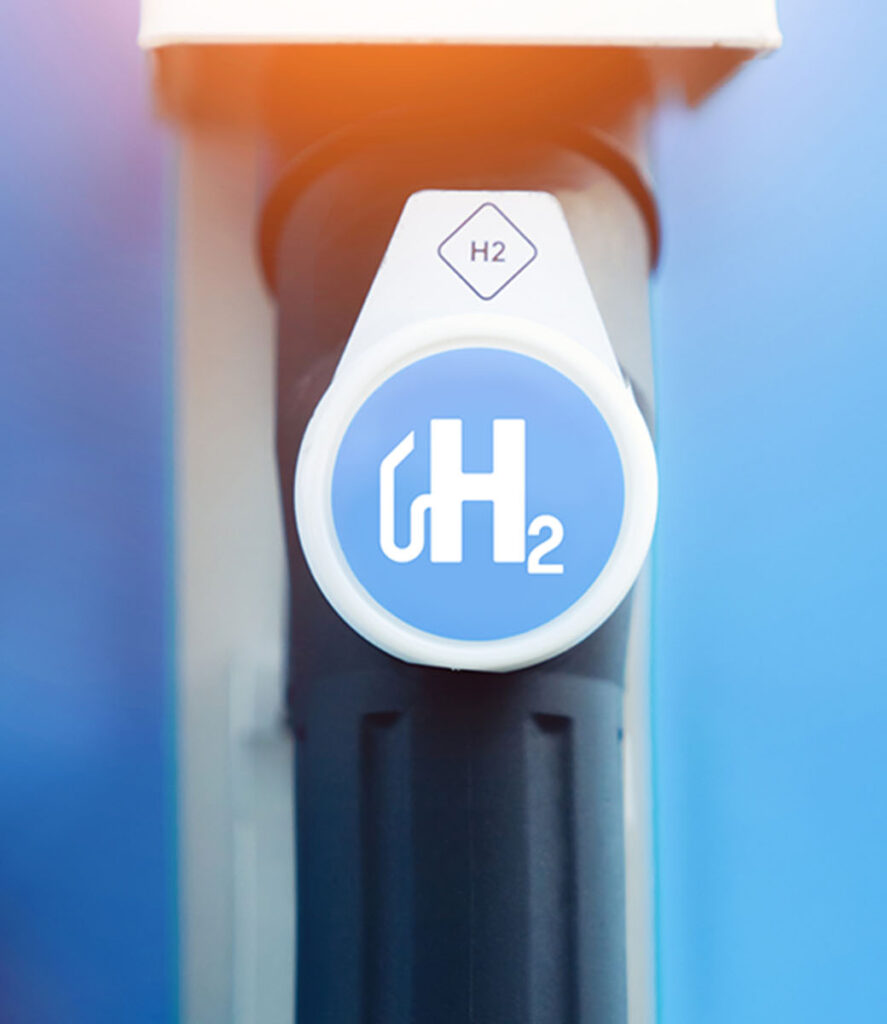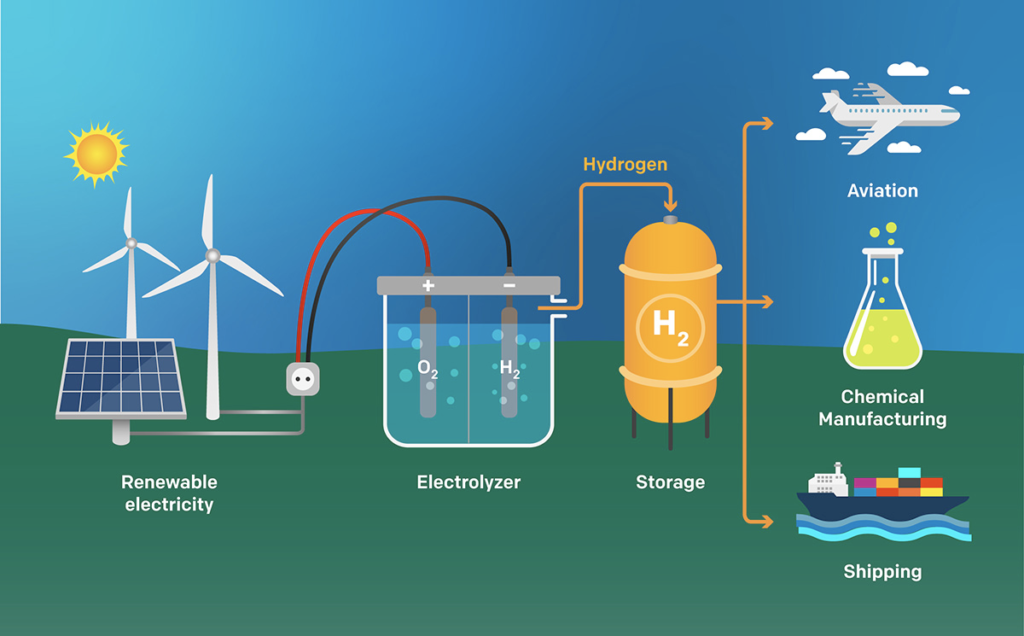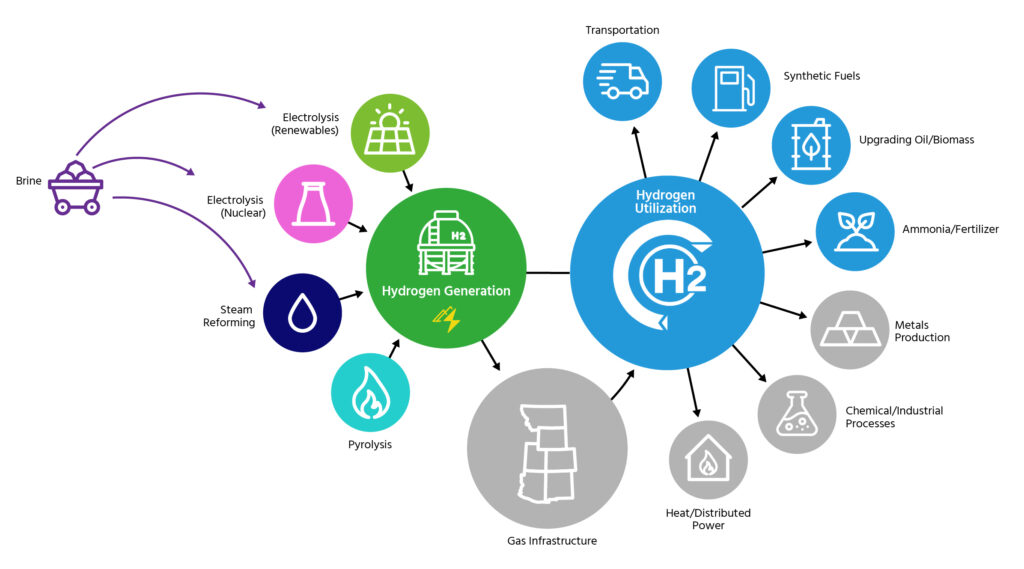Clean Hydrogen
– Mark Gordon, Governor of Wyoming
Imagine driving behind a truck that emits water vapor. That is one of the the promises of hydrogen. The U.S. Department of Energy’s hydrogen plan recognizes hydrogen’s potential role in decarbonizing the most energy-intensive sectors of our economy (including forms of transportation that cannot work effectively on batteries), and significant investments are underway to make hydrogen-based technologies more economically viable.
The I-WEST initiative is adapting this national view of hydrogen to the Intermountain West energy system. Many technology pathways to carbon neutrality relate to a hydrogen economy, and numerous opportunities across the Intermountain West exist for generating and using hydrogen, and exporting it to other regions.
Hydrogen
Hydrogen is the most abundant element in the universe, and when combusted, it produces heat and water vapor. But it does not exist naturally in large volumes in its pure form. It’s generated by being separated from other substances such as fossil fuels, water, and biomass—costly processes that can generate their own greenhouse gases. Researchers and industry are working to develop clean production methods at a price the market will accept. Although technical challenges associated with generating, storing, and delivering clean hydrogen remain, the energy community sees it as a viable alternative to fossil fuels. Hydrogen offers advantages that unite all of our nation’s energy resources—renewable, nuclear, and fossil fuels—and enables innovations in energy production and end uses that can help decarbonize some of the most energy intensive sectors of the Intermountain West economy.

Blue Hydrogen
Today, most of the hydrogen produced in the U.S., including the Intermountain West, is made using a steam-methane reforming (SMR) process in which methane from natural gas and steam are reacted to produce carbon dioxide CO2 and hydrogen. Currently, most of the CO2 is released, but CO2 can be captured as part of the process and then used or stored; the remaining hydrogen is available to use as an energy source. Hydrogen produced using this method is known as blue hydrogen that can be used to generate electricity and can fuel long-haul trucking and other forms of transportation where batteries are a poor option. Parts of the Intermountain West region have natural gas resources that could be tapped for blue hydrogen production.
Green Hydrogen
Another pathway to clean hydrogen production lies in using renewable energy—such as solar, wind, and geothermal—to power electrolyzers used to split water into oxygen and hydrogen. The Intermountain West’s abundant wind and solar resources will be key in a hydrogen economy. This process is likely to be a cornerstone of a net-zero carbon future, yet barriers exist. Today, green hydrogen is roughly 2–3 times more expensive to produce than blue hydrogen, largely due to the cost of renewable energy and lack of investment in electrolysis infrastructure.
Water Needs
With the exception of hydrogen produced by way of pyrolysis (turquoise hydrogen), all production methods require water—a scarce and critical resource in the Intermountain West. As part of its assessment of the viability of hydrogen as a pathway to carbon neutrality, the I-WEST initiative is investigating how wastewater streams might be used. For example, regional stakeholders are providing input on how brine—water produced from local oil and gas operations or co-produced during CO2 sequestration—could be treated and reused for hydrogen production.




